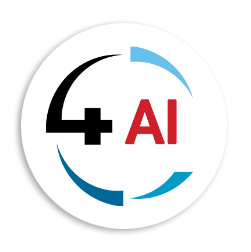Blog - Channel Partner
What’s New in Microsoft Fabric: Recent Updates and What’s Coming Next

Microsoft Fabric is evolving fast. With a focus on unifying data, enhancing AI integration, and improving user experiences, the platform is becoming a powerhouse for enterprise analytics. Whether you're a data engineer, BI developer, or business leader, the latest round of updates brings tools that improve productivity, performance, and control.
Here’s a breakdown of what’s recently changed—and what’s on the way.
AI Takes Center Stage: Smarter Integration with Azure
One of the biggest upgrades is Fabric’s tighter integration with Azure AI services. Microsoft is betting big on GenAI and machine learning, and Fabric is now equipped to take full advantage.
- Built-in Generative AI (GenAI) support lets users generate insights from large datasets using natural language, eliminating the need for complex programming or SQL queries.
- Azure Machine Learning model integration is now seamless. You can deploy and use predictive models directly in Fabric, without needing custom workarounds.
- Smarter workflows: Fabric automatically connects AI models to data warehouses, reducing the lag between ingestion and analysis.
- Adaptive AI querying helps tailor results based on user behavior and context—so your analytics get more accurate over time.
Whether you’re building customer predictions or real-time dashboards, Fabric’s new AI stack reduces the time and effort needed to build and scale intelligent apps.
Serious Performance Gains
Data teams will notice some big speed boosts. Fabric’s architecture has been tuned for performance at scale.
- Query execution is faster thanks to better resource allocation. This means reports and dashboards refresh quicker—even with complex joins or large datasets.
- Cloud workload support is more dynamic, allowing Fabric to balance resource demand across distributed systems automatically.
- Data compression and storage optimization means less overhead and faster retrieval.
- Lower CPU and memory usage make operations smoother, especially for teams running high-volume or real-time analytics pipelines.
This is crucial for enterprises running dozens—or hundreds—of active reports and models across departments. Performance is no longer a bottleneck.
Security Gets a Major Boost
Security is getting more sophisticated. Fabric now supports a Zero Trust model, which verifies each access request individually—no assumptions, no exceptions.
Here’s what’s new:
- End-to-end encryption for data at rest and in transit, ensuring that sensitive information stays protected.
- Granular access controls allow administrators to fine-tune who can view or manipulate data down to the row level.
- Multi-factor authentication (MFA) is now standard for administrative and developer access.
- Automated threat detection helps spot unusual patterns before they become breaches.
- Improved audit trails mean every data touch is logged. You know who accessed what, when, and why.
This makes Fabric much more attractive for industries with strict compliance requirements like finance, healthcare, and government.
Developer Experience: More Control, Less Hassle
Developers aren’t left behind. Microsoft Fabric now offers a better toolkit for those building custom workflows, analytics apps, and integrations.
- New APIs and SDKs make it easier to connect Fabric with external systems.
- Support for Python and R has expanded, enabling more advanced statistical models and machine learning pipelines.
- Data model configuration is now more flexible, giving teams better control over how datasets are structured and shared.
- CI/CD support is officially integrated, allowing version-controlled updates to be deployed quickly and reliably.
- Improved connectors bridge the gap between on-prem and cloud data, making hybrid setups more seamless.
The goal? Let developers build and deploy without fighting the platform.
Better User Experience for Everyone
Fabric’s UI and UX have been refreshed to focus on clarity and productivity.
- The new user interface offers cleaner navigation and customizable workspaces.
- Data visualization tools have been upgraded with more interactive charts and filters.
- Real-time alerts and personalized notifications help users stay on top of data pipeline statuses and metric changes.
- Adaptive Data Insights now suggest filters or visual tweaks based on user behavior.
- Fabric plays better with other Microsoft tools like Excel, Teams, and Outlook, creating a more cohesive workflow.
It’s a small change with big results—fewer clicks, more clarity, and better decision-making.
Highlighted Features from Recent Updates
Some of the most impactful improvements have come in the form of monthly feature drops. Here are the ones worth noting:
- Row-Level Security Editor in Power BI (July 2024): A visual interface now lets users configure access rules without deep DAX knowledge. Security is easier and more intuitive.
- Time Travel in Fabric Warehouse: You can now query past versions of data, up to 30 days back. It's a powerful safety net for debugging, auditing, or restoring historical views.
- Lakehouse Schemas: Introduced in July, this feature allows better organization of tables by department, project, or domain—making navigation more logical and collaborative.
- Copilot for Power BI (October 2024): Copilot is now conversational. It doesn’t just generate reports—it asks questions, suggests metrics, and helps users build smarter visuals.
- GitHub Integration for Dashboards: Real-time dashboards can now be version-controlled and managed via GitHub, bringing Fabric deeper into the DevOps lifecycle.
- Notebook Git Integration and Deployment Pipelines: Data scientists can now manage notebooks like code, version them, and deploy them through Fabric-native pipelines.
What’s Next?
Microsoft hasn’t officially revealed everything in the pipeline, but based on trends, we can expect:
- Tighter integration with Microsoft 365 and Power Platform.
- More AI-powered assistance across all tools.
- Expanded governance and lifecycle tools for large-scale enterprises.
- Even more performance tuning for real-time analytics.
Final Thoughts
Microsoft Fabric is hitting its stride. It’s evolving from a BI platform into a full-stack data and AI ecosystem. With better performance, smarter AI tools, stronger security, and an improved developer experience, it’s becoming essential for organizations that want to move fast, stay secure, and scale smart.
If your business relies on data—especially across departments—it’s time to take a serious look at what Microsoft Fabric can do for you. Reach out to us at This email address is being protected from spambots. You need JavaScript enabled to view it. to discuss Microsoft Fabric in more detail.


